Content marketing alone is useless.
It doesn’t produce results on its own, and it must be combined with other things to be effective.
What are these things?
1. Something to sell
Two groups of people do content marketing.
The first group starts content marketing to create awareness for their products and increase sales.
The second group visited amazing sites like Social Media Examiner, Buffer blog, Quick Sprout, and Moz.
They see content on these blogs.
Wanting to build something similar, they started investing in content marketing.
If you are among the second group, stop doing content marketing immediately.
Content marketing is not a hobby.
It’s a way of raising awareness for a product or service.
You don’t make money from pumping out content.
You need to sell something to make content marketing worthwhile.
I can bet that you’ll soon run out of money and passion if you continue doing content marketing for its sake.
Some people will say that they are just doing content marketing and will come up with a product down the line. That is still the wrong way to approach it.
By going that route, you’ll create content of all sorts. You’ll attract different types of readers.
For instance, Tim is passionate about dieting.
Tim publishes content about different kinds of diets such as the Atkins diet, raw food diet, vegetarian diet, and weight watchers diet.
Let’s imagine that Tim’s traffic picked up.
Then one day, he decided to release a product about the weight watchers diet.
He’ll see very few sales, or no sales at all because the majority of his audience isn’t interested in his weight watchers dieting product.
Assuming Tim planned to create a product about weight watchers diet from the beginning, he would have created content that appeals to his ideal customers.
I’m not saying you must create a product before building an audience with content marketing.
At least, you should know what your product will look like before building an audience. That will help you tailor your content marketing campaign to fit the kind of audience that needs the product you have in mind.
For example, Ramit Sethi sells several products on his website.
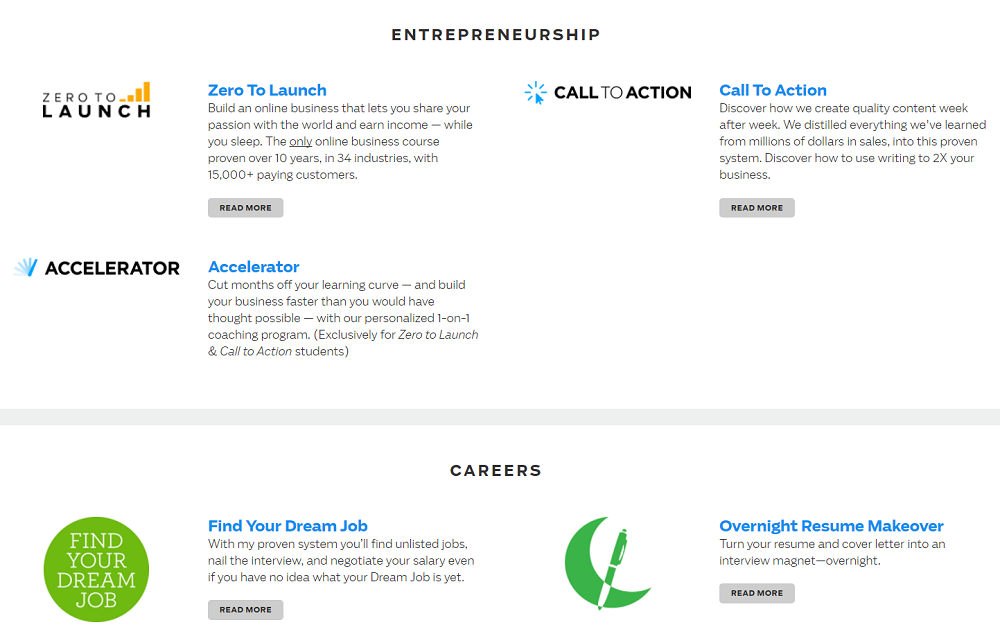
He creates content his ideal customers want to read.
HubSpot creates content their target customers, who are digital marketers, entrepreneurs, small business owners, and marketing agencies, want to read.
Knowing your target customers and what they like to read is crucial to the success of your content marketing campaign.
That is why you should build the product first, or at least know the product before you start doing content marketing.
2. A good web design
You need a good design.
A good site design improves your visitors’ experiences, which increases sales.
Leadpages is currently killing it with content marketing. The company used it to acquire 15,000 paying customers within a year.
The site design makes you want to use their product.
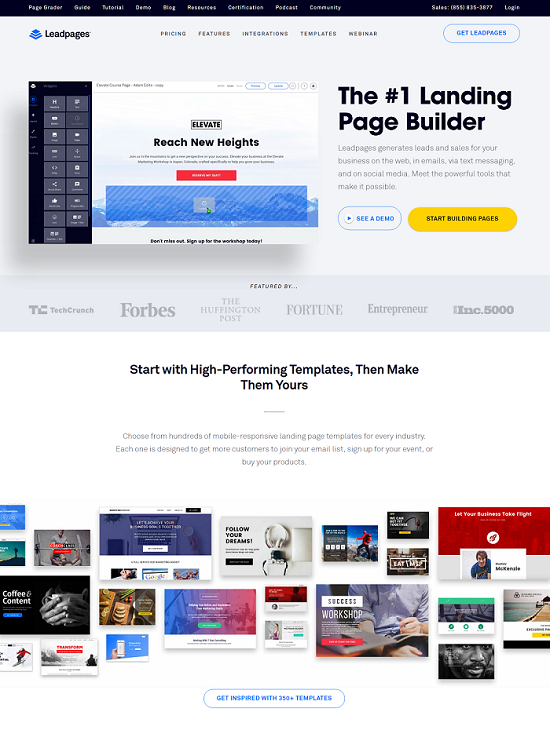
Get a simple design
Your site should have a simple layout. It should have simple navigation with a few options.
Look at the website of Xero. The site is easy to navigate.
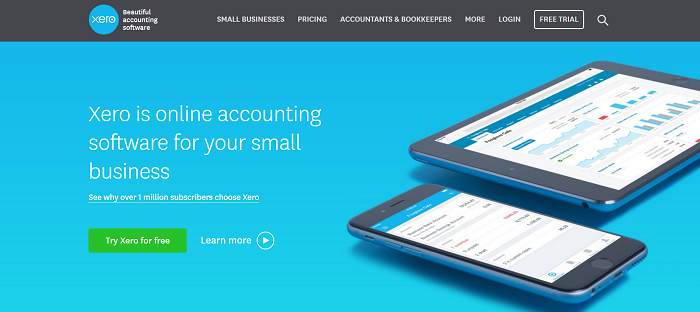
According to a study by Google, “visually complex” websites are rated as less beautiful than their simpler counterparts.
Don’t include every link in the navigation menu.
The navigation menu should contain links to a few important pages on your website.
Choose the right color scheme
The color you choose can improve or hurt your brand identity.
Never use a color scheme that isn’t associated with your company.
For example, Starbuck’s colors are green and white.
You can see how they use these colors on their website.
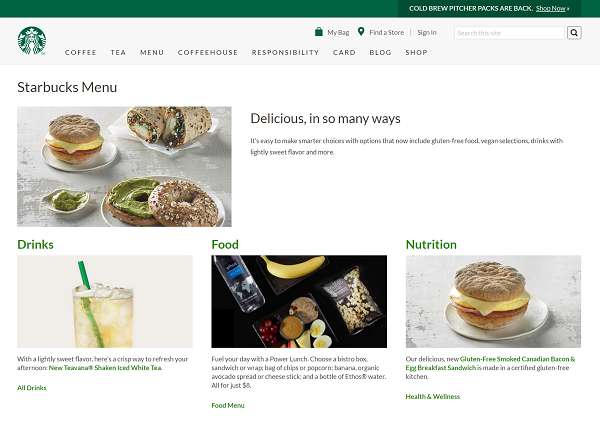
For example, if your logo has orange and white, and your site’s dominant colors are black and red, then you’re doing it wrong.
John Deere’s colors are green and yellow. They reflect on the site design.
Picking the right color combination is vital for building trust in the minds of web users.
They expect the same colors that represent your brand across every platform on the web.
Draw attention with large buttons
Your call-to-action buttons help you drive traffic to your site’s sales pages and other important pages.
By making your buttons bigger, they get more attention from visitors.
More attention leads to more clicks.
And more clicks generate more sales.
Your call-to-action buttons are an essential element of your site design.
It’s tough to increase revenue with content marketing if your call-to-action buttons aren’t receiving clicks from visitors.
For example, MailChimp invests in content marketing.
When reading their blog posts, you’ll notice that their call-to-action button is bigger than other links on the site’s sticky navigation menu.
The button is not only bigger. It also has a separate background color which helps it stand out on the navigation menu.
If you’re hiring a web designer, he/she should be able to make a simple design that’s easy to use, knows about colors and create experiences that make your call-to-action buttons stand out and get a visitor’s attention.
Without a great web design that delivers an outstanding user experience, content marketing is a waste of time.
3. A profitable sales funnel
Sales and content marketing are not the same things. Though, they are intertwined.
You need a sales funnel to generate maximum ROI from your content marketing efforts.
According to Infusionsoft:
“A sales funnel is the upside-down pyramid that represents the journey potential customers go through to become customers.”
The truth is that people don’t become customers after reading one blog post.
They go through some stages where they read several different kinds of content before deciding to buy your product.
You should systematically take them through these stages.
When you do, it makes it easier for them to buy. It helps them understand why you’re the perfect merchant.
A sales funnel consists of 4 main stages:
- Awareness
- Interest
- Decision
- Action
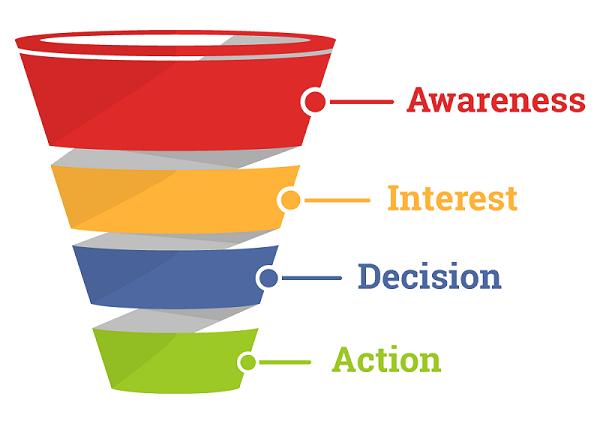
Allow me to explain each stage quickly.
Awareness
The awareness stage is where potential customers discover your brand, product, or service.
You get awareness through blogging, social media marketing, pay per click (PPC) advertising, PR, etc.
For example, here’s Buffer publishing a blog post to generate more awareness for their social media management tool.
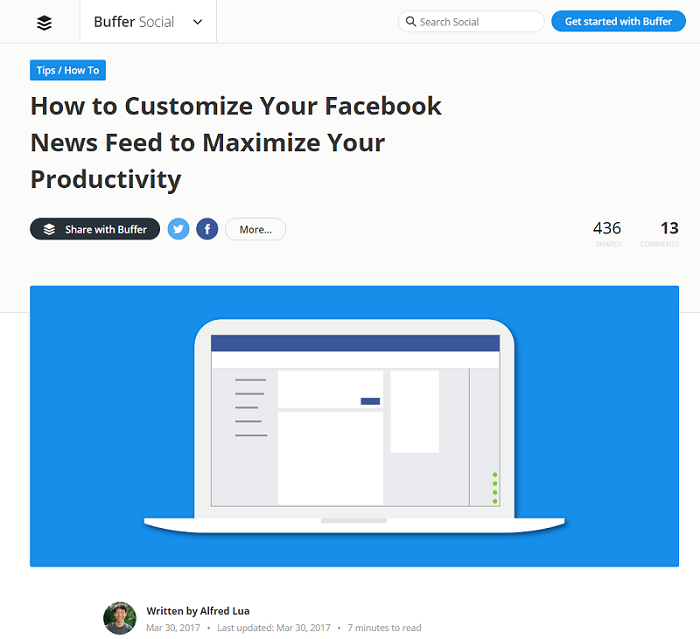
Interest
This is the stage where you ask visitors for their emails in exchange for a free ebook, course, or consultation.
Your aim at this stage is to have their emails so that you can tell them about your product and how it will help them achieve their goals.
For example, Copyblogger is offering free membership to their marketing course. You need to sign-up with your email address to access this resource.
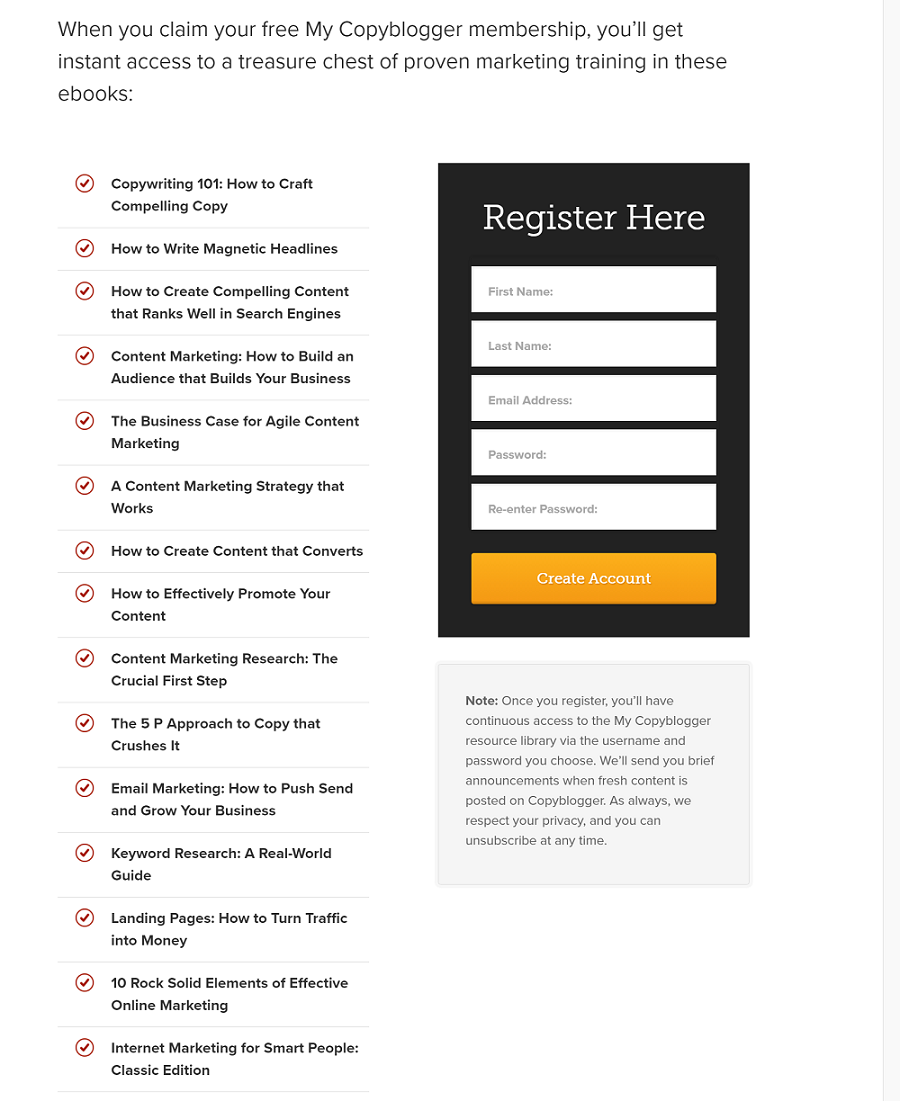
Decision
The emails you’ve collected give you the power to reach out to potential clients.
At this stage, you explain the value they will get from buying your product. You lay out the pricing, options, cons, and pros.
You can use videos, webinars, testimonials, and discounts to persuade customers to buy.
Grammarly made me a customer because of this email.
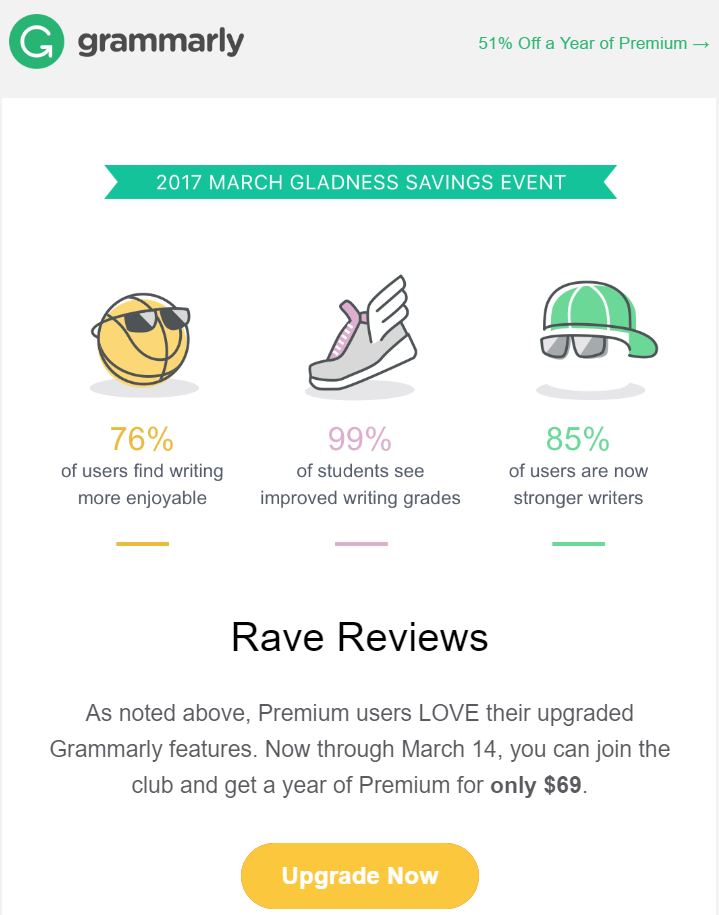
Who doesn’t like a 51% annual discount?
They wouldn’t have been able to contact me if they didn’t have my email.
Action
This is the final stage of the sales funnel.
It’s where prospects input their credit cards and buy your product.
It can also be referred to as the checkout page.
This stage is essential to your business because it’s where prospects decide to become customers.
If the action stage is broken, the first three stages of the sales funnel are a complete waste of time.
Problems that could arise on the checkout page include:
- Unnecessary costs or fees you didn’t tell buyers before leading them to this stage. Another word for this is greediness.
- Failure to use security logos on your checkout page. This makes buyers feel less safe with their payment details. They may decide not to buy because of this reason.
- Poor usability. For example, if your checkout page isn’t using a mobile responsive design.
Without a well-designed and structured sales funnel, you’ll be leaving a lot of money on the table even if you’re doing content marketing right.
4. An excellent customer service
Often, successful content marketing relies most heavily on content created by customers rather than your brand.
The most effective content marketing is when customers are talking about your brand on their blogs, social media accounts, review websites, online forums, etc.
Before consumers make purchasing decisions, they visit Yelp, ask their friends on Facebook and Twitter, and Google what others are saying about your company.
A single negative review that ranks high on Google could cost your business a lot of sales.
Don’t invest in content marketing until you’ve gotten your customer service right.
In today’s digital world, having excellent customer service is vital.
If you gain customers through content marketing and lose them due to bad customer service, then it makes no sense.
Those unhappy customers will tell their friends and family about the negative experience they had with your company. That hurts your business reputation and makes it harder for content marketing to produce an excellent result.
These four things are important to content marketing:
- Have a product to sell. Or at least, have a product in mind before starting your content marketing campaign.
- Invest in a great web design that is easy to use and increase trust in your brand.
- Set up a profitable sales funnel.
- Create an excellent customer support system.
What other things do you believe are needed for content marketing not to be a waste of time?
Tell me below in the comment section below.
Thanks for reading.
